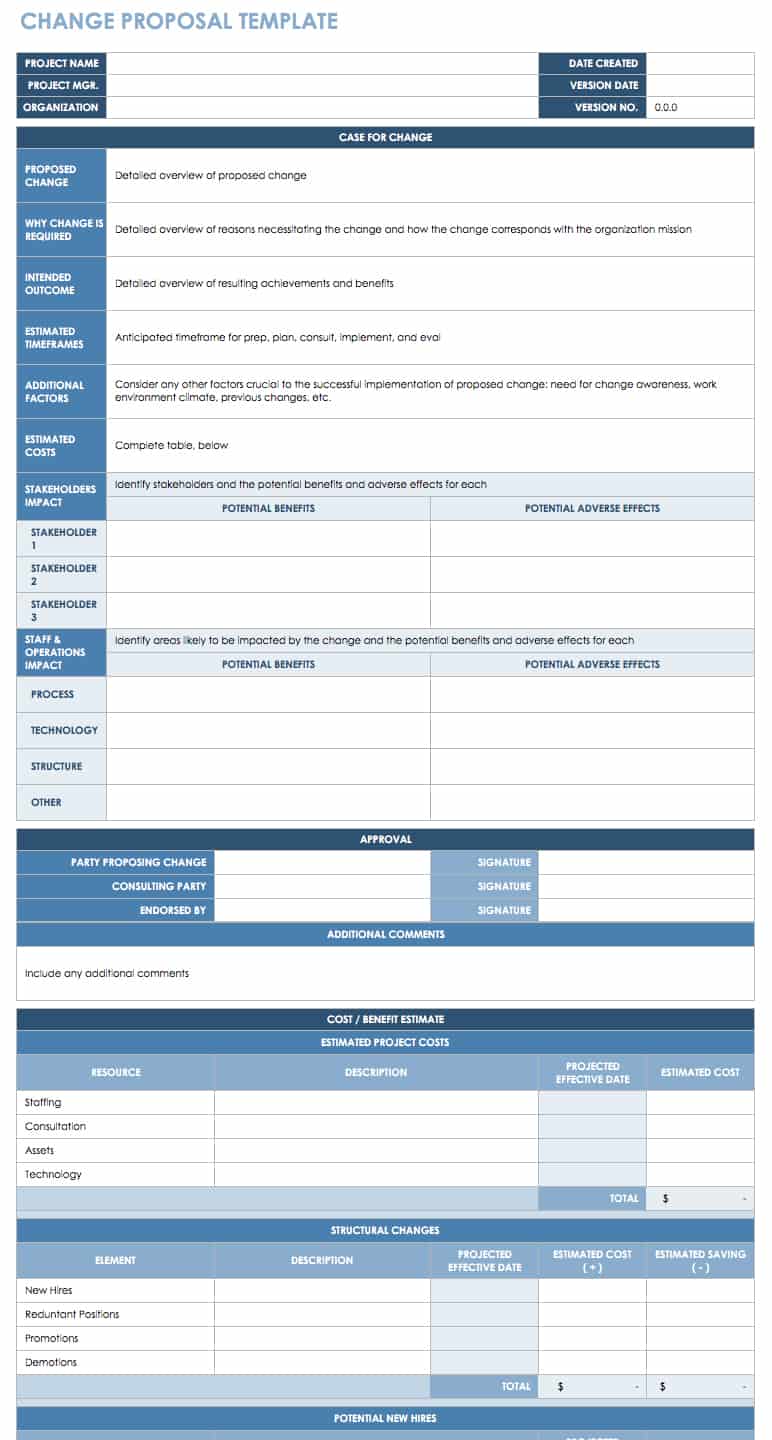Managing and controlling changes to requirements is crucial in ensuring the success of any project. A well-thought-out requirements change management template provides a structured framework for documenting, assessing, and tracking changes to project requirements.

The Importance of a Requirements Change Management Template
Changes are inevitable in any project, and effectively managing these changes is essential for project success. A requirements change management template provides several key benefits.
- Improved Communication: A template establishes a clear and consistent process for proposing, reviewing, and approving changes, ensuring that all stakeholders are informed and on the same page.
- Reduced Risk: By documenting and evaluating the impact of changes, organizations can identify potential risks and mitigate them early on, reducing the likelihood of project failures.
- Enhanced Traceability: A template enables the tracking of changes throughout the project lifecycle, ensuring transparency and accountability.
- Increased Efficiency: By standardizing the change management process, organizations can streamline communication, reduce redundancy, and improve overall efficiency.
- Improved Decision-Making: A template provides a structured approach to evaluating change requests, ensuring that decisions are made based on objective criteria and data.
Creating an Effective Requirements Change Management Template
Designing an effective requirements change management template requires careful consideration. Here are some key elements to include:
- Change Request Form: A standardized form for submitting change requests, capturing essential information such as the proposed change, rationale, and impact assessment.
- Change Review Process: A defined process outlining the steps involved in reviewing and approving change requests, including roles and responsibilities.
- Change Tracking Log: A central repository for documenting all changes, including the status, history, and impact of each change.
- Change Impact Assessment: A systematic approach for evaluating the potential impact of proposed changes on the project scope, schedule, and budget.
- Communication Plan: A plan for communicating approved changes to stakeholders, ensuring timely and effective dissemination of information.
Conclusion
Implementing a well-defined requirements change management template is essential for managing and controlling changes in any project. By providing a structured framework and standardized processes, organizations can improve communication, reduce risks, enhance traceability, and increase efficiency. A requirements change management template is a valuable tool for ensuring successful project outcomes.
Ultimately, the effectiveness of a requirements change management template depends on its adoption and adherence by all project stakeholders. By fostering a culture of continuous improvement and encouraging active participation, organizations can reap the benefits of effective change management and deliver successful projects that meet the evolving requirements of the business.
